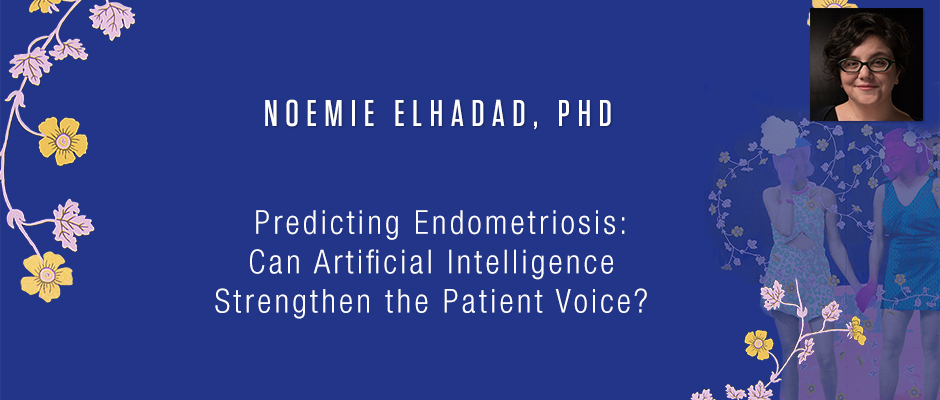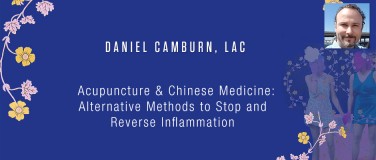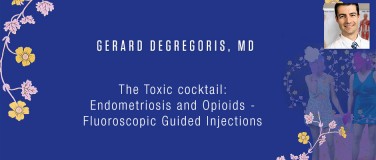Noemie Elhadad, PhD - Predicting Endometriosis: Can Artificial Intelligence Strengthen the Patient Voice?
Patient Awareness Day 2019: HEALTHY MIND & HAPPY PELVIS
Living Your Best Life With Endo
March 10, 2019 (8am - 5pm)
Einhorn Auditorium, Lenox Hill Hospital, New York City
https://www.endofound.org/patientday/2019
I want to say that seven years ago I was here as a patient and it was really the first time I had started thinking about endometriosis. And I'm extremely grateful to Dr. [inaudible 00:00:24], who kind of planted the seed in my head that maybe the type of research that I was doing could be useful for endometriosis research. And do we have my slides? I think we do.
He can ... It's just, you know, I could do it without the sides, but there's so many nice pictures. I feel bad. Oh, yay. Okay. All right. Very good.
Okay, this is where I want to start. I didn't know as a patient, I was diagnosed at age 14 until age 30 something, I still didn't know what endometriosis was. And I think we've heard it today, a lot of patients are talking about the fact that they might not even realize that some symptoms might be related to their endometriosis, right? And so is a very common question from patients and from people who are not patients. What is endometriosis was top third question in ask to Google Health. And it turns out, researchers right now are asking the same questions. These are very recent paper. The one over here is two weeks old and is asking again the same question. We don't know what exactly is a description of endometriosis. And so one might ask themselves, why is it so hard?
Is there something specific about this disease? And a lot of the talks today and at the medical conference in the past three days have been thinking about these questions. But I guess if I had to summarize it, I would say that first of all, there's no biomarkers, right? But there's also it's a very heterogeneous disease. And what I mean by that is that patients might experience different things and yet still have the same diagnoses of endometriosis. And finally, there's this healthcare issue, which is that the clinicians mental model of the disease might not align with what the patient is experiencing, right? We've heard so many stories of patients saying something's wrong with me, and the doctor's not filling in the dots and understanding that this might actually be endometriosis. So what I've been trained to do in my research was to design self tracking tools that can help us phenotype. And by phenotyping, I mean characterizing endometriosis.
So a self tracking tool. That means asking the patients directly to tell us researchers what is their experience of endometriosis and how can that help us simply describe the disease for now. So we created this app called Phendo as part of the citizen endo project. It's a free app. In fact, it's a research study. As you joined the app, there's an onboarding with a consent that explains to you how your data is kept private and confidential. It's part of our Columbia University research approved protocol and there are all sorts of things that you can be tracking about your endometriosis or about your health in general. The design of the app was done by asking patients for what are their symptoms, what bothers them in their health. And we do spend a lot of time thinking about signs and symptoms as well as a functional assessment of their day.
So this picture here for example is asking what type of activities was hard to do. And we started creating functionalities that are about helping patients self managed using the app, because that's one of the the functionalities that the patients asked us about. We're working on this but what I'm going to talk about today is mostly what do we do as scientists with the data that we've been collecting from patients. So to date we have about 6,000, nearly 7,000 participants who are coming from all over the world and they approximately have given us researchers about 1 million individual data points where each one is a representation of their experience of endometriosis. So one observation might be today at 7:40 AM I woke up and I had pain in my right hip. Okay? What's interesting to us is that a 25% of the participants have been tracking for at least one month.
So we have a lot of data. This is an incredibly rich data set for us to analyze. And we're, we're quite excited. This is kind of the beginning of the type of exploration we're doing with the data set. So the first question we asked was, okay, we know that the disease is heterogeneous, everyone is experiencing the disease a little bit different. Can we propose different subtypes of the disease? Can we cluster or group people based on their symptoms and see if it fits with the staging classification? Or is phenotype classification proposed in the literature? So this is where the AI comes into account. We've used a lot of a machine learning type of models. If anyone is interested, this is called a probabilistic graphical model and what it allows us to do is, with a whole lot of computer power, it enables to this 1 million observation and try to group and identify clusters of signs and symptoms as well as clusters of people.
So what the heat map on the left is showing you ... on your left? Yes, on your left, is showing you is we found between three and four sub group that made a lot of sense with respect to the data. In other words, there are three or four subgroups where if you assign people to these four groups it explains very well the data and it explains things in a fairly homogeneous ways. So for example, phenotype zero over there ... I apologize, I lost my voice this morning, if you can hear. Phenotype zero over there, there is about 600 participants that seem to really group together and look a lot like each other with respect to their symptoms. And what I'm showing here on the right is that in fact this grouping is really about the symptoms and not about how much these people have been tracking or for how long they've been tracking.
So this is some example of phenotype. There's a whole lot here. I'm not expecting you to find out. And we have a publication about it, which I'm happy to bring people to. But the way you would want to read this, and I'm going to go through some examples, is these are three of the phenotypes that we identified and it's what we called word clouds, where each cloud is representing a set of possible answers to a question. So one of the questions we might ask is where does it hurt? And on the top left over there in blue, there's a whole lot of body locations and these are the body locations that our participants report having pain moments. We have, what type of activities were difficult to do? And we have various examples of activities that were difficult to do. That changed from one group to the other.
And the way to read the saying is the larger the font, it means that the more that this particular answer explains participating in this group. So people in this group who are more likely to answer our questions this way. So this is our first group as an example. And we are looking here at all the pain questions. So we are asking them, where is the pain? Can you describe the pain in terms of words, and how severe is a pain? There are more choices in this, but these are the ones that the participants in this group are reporting to us and what I want you to pay attention to is that there's clearly a lot about the pelvic, but it's more than the pelvic, right?
The type of pain also being reported has to do with deep pain, stabbing, throbbing pressure pain, sharp pain and while there is a lot of choices for type of pain, how severe the pain is, people in this group report predominantly severe pain. So these are people who are quite affected. I'm not showing the analysis here, but what we also found is I think what must endometriosis patients know already, which is that this pain is not confined to the menstrual period phase, but really happens throughout a their menstrual cycle. These are some of the symptoms that this particular group is experiencing. There is fatigue being the most predominant one, but also things like noise sensitivity and sweaty and and even numbness.
These are the type of menstrual cycle for the ones who do have a menstrual cycle that are being reported by our participants, and we notice in particular that there is a lot of heavy flow and clots for this group, which doesn't happen in the other groups. These are the gastrointestinal results that have been found to cluster very well with these other type of pain and period type of patterns, and endo-belly is actually predominant across all groups, but these ones also has frequent urination and painful urination as well as severe GI symptoms as opposed to mild or moderate.
Interestingly the functional aspect of the disease is quite prominent in this group. They're mostly no sex, painful after sex or bigger deal is avoided sex. Other groups don't have that as much. And these are the type of daily activities that our participants in this group report to us as being very difficult to handle. They can't walk. Like these are very, very basic activities. Right? Walking, standing, using the toilet, working, getting out of bed. And these are the treatments that they are using mostly narcotics and combination of narcotic analgesic.
Okay. So just as comparison, this is another group. This one, there's also not a lot of sex, but there's also some happy experiences with sex and that's good. The activities that are thankfully a little bit less difficult to go through, for example. So my point here is that we're seeing these differences, we're able through these data analysis techniques to cluster these subtypes. I'm not showing you here for the sake of time, we've done a lot of evaluation of these things. Trying to figure out, is this a real signal or not? We've crossed correlated it against medical questionnaires is that our participants are giving and we feel pretty confident at this point.
What I like about this clusters is that it really reflect the systemic impact of the disease. Every participant is wholly affected by endometriosis, but the patterns seem to be changing from one type of patient to the other. So again, I think my only hope here is that the type of work we're doing is going to help create these pattern signatures of types of patients. And the hope is that maybe said in these terms, it's throbbing pain that is mostly deep in my rectum and my vagina and things like that. Those are going to be maybe easier to explain and to align with what clinicians. And by clinicians, I mean ED doctors, general practitioners, this type of doctors, not endo-specialists, are going to be more likely to understand and maybe have endometriosis more on their radar.
So I want to thank the Endometriosis Foundation of America. The work is also founded by the National Science Foundation and the National Institute of Health, the NLM. I also want to thank all the participants. It's been extremely rewarding to have such an amazing response from the community and as a patient, but also as a researcher, I'm extremely thankful. Thank you so much.










